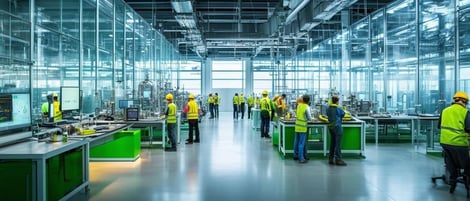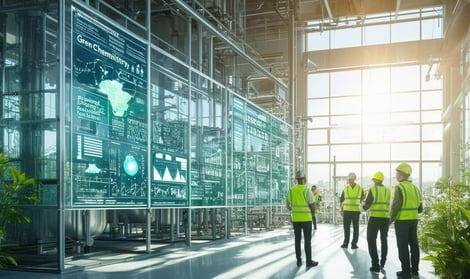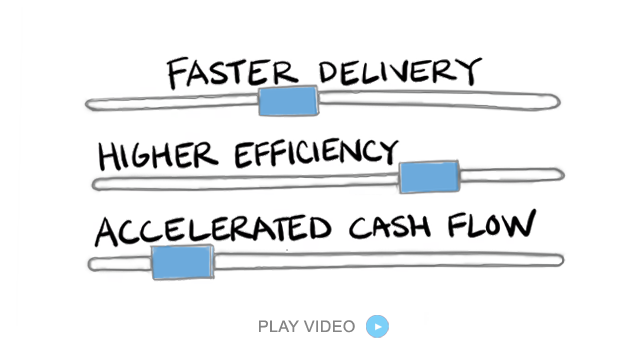Green Chemistry: Paving the Way for a Sustainable Future in Chemical Manufacturing
The paradigm shift towards green chemistry—the design of chemical products and processes that reduce or eliminate hazardous substances—is reshaping the industry. For Manufacturing IT Managers, particularly those in chemical manufacturing facilities, the integration of advanced technologies and systems like PlanetTogether with enterprise platforms such as SAP, Oracle, Microsoft Dynamics, Kinaxis, or Aveva offers a pivotal opportunity to advance green chemistry initiatives.

Green Chemistry in Chemical Manufacturing
Green chemistry encompasses the application of principles aimed at minimizing the environmental footprint of chemical processes. These principles include reducing waste, using renewable feedstocks, and designing safer chemicals and processes. For chemical manufacturers, adopting these practices can lead to significant cost savings, enhanced regulatory compliance, and improved market positioning.
However, transitioning to green chemistry requires more than just scientific innovation. It demands robust digital infrastructure capable of optimizing processes, ensuring traceability, and facilitating cross-functional collaboration. This is where Manufacturing IT Managers play a crucial role.
![]()

The Role of Digital Integration in Green Chemistry
As the complexity of chemical manufacturing grows, so does the need for sophisticated digital tools. Integrating PlanetTogether with enterprise resource planning (ERP) systems such as SAP or Oracle, or with supply chain solutions like Kinaxis, can provide the necessary backbone for implementing green chemistry principles effectively.
Enhancing Process Efficiency and Waste Reduction
PlanetTogether’s Advanced Planning and Scheduling (APS) capabilities can optimize production schedules, ensuring that resources are used efficiently and waste is minimized. When integrated with SAP or Microsoft Dynamics, this synchronization enables real-time visibility into raw material usage, energy consumption, and byproduct management.
For example, by leveraging data from Aveva’s process control systems, Manufacturing IT Managers can identify inefficiencies in chemical reactions that lead to excess waste. These insights can then inform adjustments in production schedules managed through PlanetTogether, aligning operational goals with green chemistry principles.
Facilitating the Use of Renewable Feedstocks
Switching to renewable feedstocks is a cornerstone of green chemistry. Integrating supply chain platforms like Kinaxis with PlanetTogether enables IT Managers to track and manage the procurement of sustainable raw materials. This integration ensures that green feedstocks are prioritized in production planning, reducing reliance on non-renewable resources.
Furthermore, Oracle’s advanced analytics capabilities can be used to model the environmental impact of different raw material options. When combined with PlanetTogether’s scheduling tools, these insights empower manufacturers to make data-driven decisions that support sustainability goals.
Ensuring Regulatory Compliance
Compliance with environmental regulations is a critical aspect of green chemistry. Integrated systems can simplify compliance management by automating data collection, analysis, and reporting.
For instance, integrating Aveva’s engineering data with PlanetTogether can provide comprehensive documentation of process changes aimed at reducing hazardous emissions. SAP’s environmental compliance modules can then generate reports for regulatory bodies, streamlining the auditing process and reducing administrative burdens.
Promoting Cross-Functional Collaboration
The success of green chemistry initiatives often hinges on collaboration between departments. Integrating ERP systems like SAP with PlanetTogether fosters seamless communication between production, procurement, and R&D teams.
For example, R&D teams can use insights from Aveva’s simulation tools to design greener processes, which are then implemented in production through PlanetTogether’s scheduling platform. This integration ensures that innovations are quickly and effectively translated into operational improvements.

Overcoming Challenges in Green Chemistry Adoption
While the benefits of green chemistry are clear, its adoption in chemical manufacturing is not without challenges. Common barriers include:
High Initial Investment: Implementing new technologies and processes can be costly. However, the integration of PlanetTogether with existing systems like Oracle or SAP can help maximize the ROI by improving resource utilization and reducing waste.
Data Silos: Fragmented data can hinder decision-making. By connecting systems through integrations with platforms like Kinaxis or Microsoft Dynamics, IT Managers can create a unified data ecosystem that supports comprehensive analysis and planning.
Resistance to Change: Transitioning to green chemistry requires a cultural shift. Manufacturing IT Managers can play a pivotal role by demonstrating the tangible benefits of integration, such as cost savings and enhanced compliance.
For Manufacturing IT Managers in chemical facilities, the integration of PlanetTogether with platforms like SAP, Oracle, Microsoft Dynamics, Kinaxis, or Aveva is not just a technical upgrade—it is a strategic enabler of green chemistry. By leveraging these integrations, IT Managers can:
Drive sustainability through optimized resource utilization.
Enhance compliance and reduce regulatory risks.
Foster innovation by breaking down data silos.
Build a competitive edge in an increasingly eco-conscious market.
Green chemistry represents the future of chemical manufacturing. With the right digital infrastructure, Manufacturing IT Managers can lead their organizations toward a more sustainable, efficient, and profitable future.
Are you ready to take your manufacturing operations to the next level? Contact us today to learn more about how PlanetTogether can help you achieve your goals and drive success in your industry.
Topics: PlanetTogether Software, Integrating PlanetTogether, Chemical Manufacturing, Ensuring Regulatory Compliance, Promoting Cross-Functional Collaboration, Enhancing Process Efficiency and Waste Reduction, Facilitating the Use of Renewable Feedstocks





















LEAVE A COMMENT